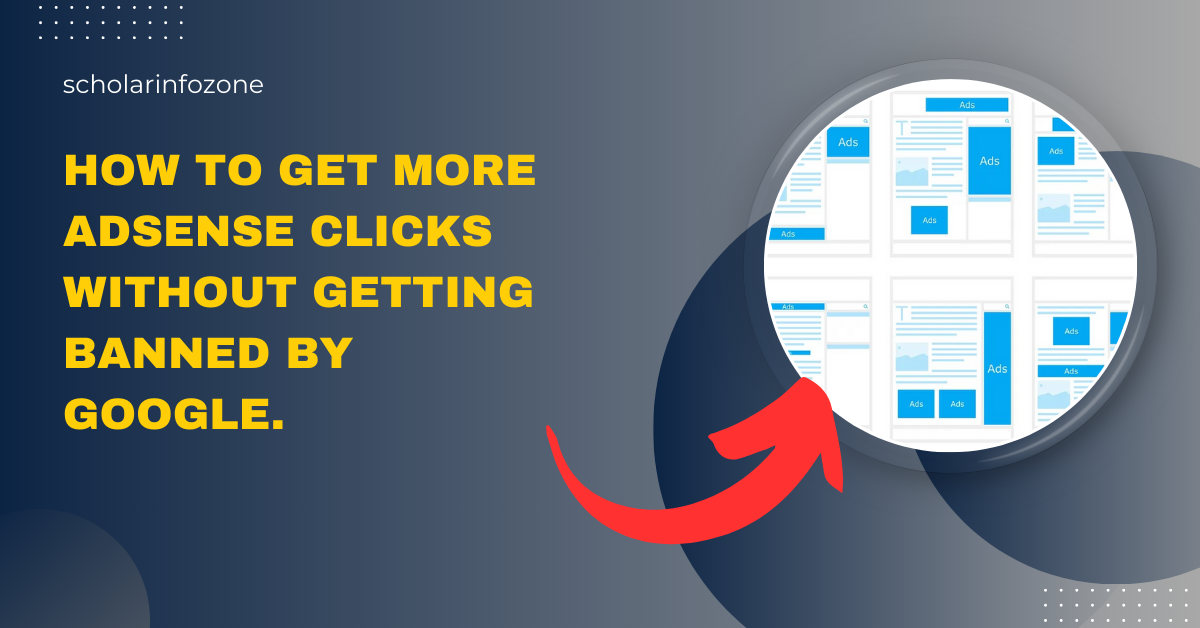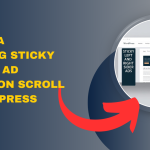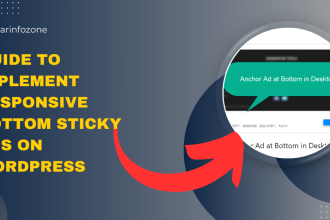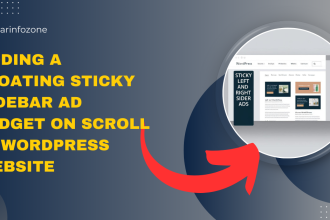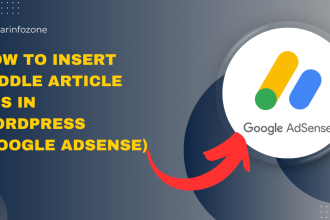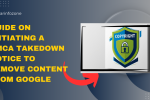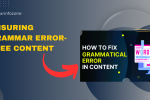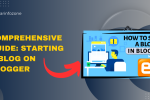AdSense is the most commonly used ad network to display targeted advertisements that are relevant to the content on the page and can be used by website owners to earn money on a pay-per-click basis. But getting users to click on these ads can be tough
In this article, we are listing some of the tips to increase your clicks on Adsense ads and earn more through it
It is hard to get higher Adsense ad clicks, but here are some of the things that can be implemented:
1. Understand How AdSense Works
2. Create High Quality, Targeted Content
3. Plan Ads Placement Efficiently
4. Use the Best Ad Sizes
5. Optimize Your Site for Speed and Mobile Devices
6. Try Out Some Colours and Types
7. Increase Targeted Traffic
8. Use Heatmaps and Analytics
9. Design More Interesting Content Blocks
10. Utilize AdSense Auto Ads (with Caution)
11. Test, Analyze, and Refine
12. Stay Within Google’s Policies
To Boost the Clicks on Google AdSense Ads
1. Understand How AdSense Works
Before even trying to increase your CTR, you should learn, in detail, how AdSense functions. AdSense shows ads based on your content and visitors. When these ads are clicked (cost per click—CPC) or occasionally just seen by users (CPM), that’s how you make money. It actually depends a great deal on
- Ad relevance
- CPC rates
- Click-through rate (CTR)
To get more clicks, concentrate on increasing CTR while giving a good user experience, and complying with AdSense policies, etc.
2. Create High Quality, Targeted Content
Google celebrates high-quality content with access to better ad placements and higher-paying ads. Here’s what to do to realign your content strategy:
- Pick one niche: Focus on a specific vertical or subject matter area with strong advertiser presence (i.e., finance, health, technology).
- Use long-tail keywords: These draw users in with high intent and ensure the ads are highly relevant to what the user is looking for.
- Write evergreen content : If you write a killer post that stays relevant and brings in consistent traffic over time.
The closer your content aligns with the intent, the better the relevancy of ads shown, which in turn naturally enhances click-through rates.
3. Plan Ads Placement Efficiently
It is always a proven strategy to place your ads in such a way that they may work for you optimally. The position and the way you put ads on your site matter; they have a big-time CTR impact.
Best practices include:
- Above the fold: Put ads where users can see them before they scroll.
- In content: In-article ads. Halfway through a story in the middle of the article text, carefully direct attention without being intrusive.
- Sidebar or header: These are seen on most pages and can attract attention, especially when there’s not much content.
Avoid:
Cramming too many ads in one spot on a page (ad blindness).
Pop-ups or ads that interfere with the user experience.
Experiment with different layouts using Google AdSense experiments to determine which is right for your reader.
4. Use the Best Ad Sizes
Not all ad sizes are winners, as some fit more display inventories and command better advertiser bids than others.
High-performing AdSense ad sizes:
- 336×280 – Large rectangle
- 300×250 – Medium rectangle
- 728×90 – Leader board
- 160×600— wide skyscraper
Responsive ads – These ads automatically adjust themselves for all devices to get maximum visibility and clicks.
Especially responsive ads are working really well on mobile, where there’s only very limited space.
5. Optimize Your Site for Speed and Mobile Devices
A slow-loading site can cause your visitors to press the back button faster than anything.
Actionable tips:
- Use performance diagnostic tools such as Google PageSpeed Insights or GTmetrix.
- Compressed images, browser caching, and CSS/JavaScript minification.
- Select a theme that’s friendly for mobile, and test out your site on different devices.
The more quickly and easily your site loads, the longer users will stick around, and the more likely they are to engage with ads.
6. Try Out Some Colours and Types
Ad units that integrate well with your site’s design (in a non-deceptive manner) usually work better. Conversely, in some instances conflicting ad colors could stimulate clicks too.
Two common approaches:
- Blend: keep the ad’s background and text colors consistent with how your site is laid out.
- Complement: Incorporate colors that are close but not identical to those on your website in order to allow the ads to stand out in a more passive way.
Vote for something as the shittiest one, and this will perfectly fit in. Always aim to “understand,” or don’t say “style is” misleading”—that can get you banned.
7. Increase Targeted Traffic
Get more targeted traffic. The more targeted your traffic is, the higher your CTR will be. Forget simply volume and focus on quality traffic.
Best traffic sources:
- Organic search traffic: Google search users in particular click more often if your content addresses their problem.
- Social media: When nichely targeted, Facebook, Reddit, and Pinterest are channels that can bring niche audiences.
- Email newsletters: Most loyal subscribers tend to read more content and ads.
Don’t buy traffic from banned sources or from Pay Per Click … Google will smell and punish you.
8. Use Heatmaps and Analytics
Employ tools like Hotjar or Crazy Egg to know where users are clicking and how they navigate your site. Put it together with some Google Analytics and AdSense performance reports.
Insights to look for:
- Pages with high bounce rate
- Segments, where users stay more time
- Low performing ad units
Use this data as an opportunity to either adjust the position or revise the design of your weakest-performing ad units.
9. Design More Interesting Content Blocks
Well-constructed articles induce further reading and raise the likelihood of ad click-through. Consider:
- Incorporate bullets and subheads.
- By utilizing images and infographics.
- Embedding videos
- Copy that seamlessly transitions into ads (i.e., product reviews, tutorials)?
The more time users engage with your content, the more ad impressions and clicks you’ll accrue.
10. Utilize AdSense Auto Ads (with Caution)
Google Auto Ads will place ads automatically when and where they are likely to perform. They can be handy when you don’t have time to manually test placement.
Pros:
- Easy to set up
- Utilizes AI from Google to finding the best placements
Cons:
- Can be a bit aggressive with placement at times
- May affect user experience
Combine Auto Ads with manual placements and refresh their performance regularly.
11. Test, Analyze, and Refine
Optimizing ads is not work you do once. You should continuously test:
- Different ad formats
- New ad placements
- Page layouts
- Traffic sources
A/B test and watch performance metrics in your AdSense dashboard. And be patient — modest gains add up over time to produce stronger results.
12. Stay Within Google’s Policies
Finally, never, ever try to cheat the system.
Avoid:
- Prompting unplanned clicks
- Deceptive labels such as “Download” and “Watch Now” above ads
- Automated bots or sources paid traffic
- Clicking your own ads
Google has some complex algorithms, and not following the rules can result in account suspension or permanent bans.
Conclusion
Trying to increase the amount of clicks on your AdSense ads is not about conniving the users, but it is about improving user experience, writing well, improving ad visibility, & targeting the right visitors. With a mixture of content strategy, data-driven ad placement, and ethical SEO, you can gradually improve your AdSense income, all the while ensuring that your website remains on-point.
